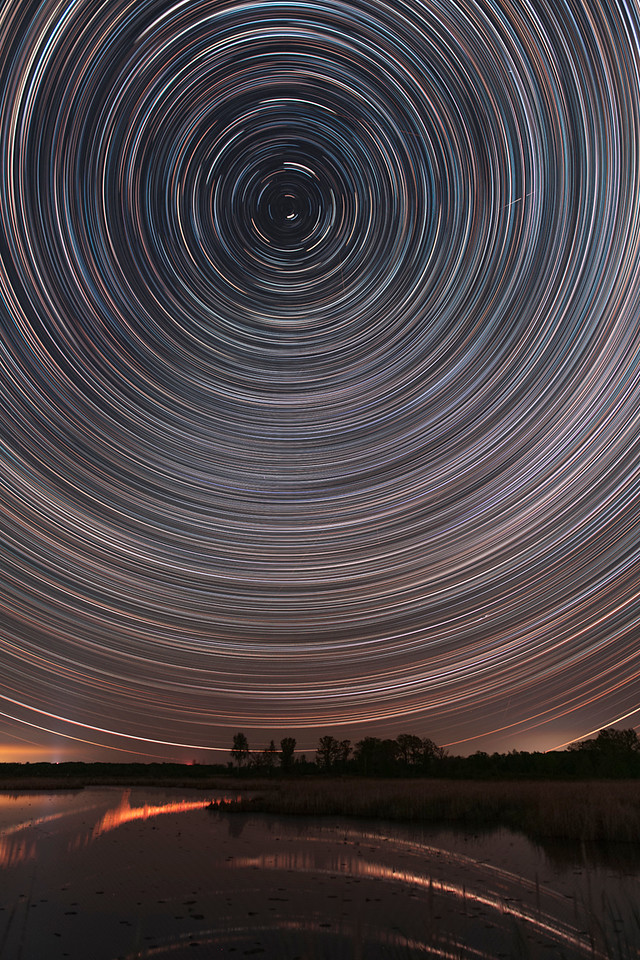

I happen to like 45 minutes worth of stars some like much longer… I find it distracting (all the images you will find on this site are approximately 45 minutes). The “long amount of time” I reference is totally up to you and depends on how long you want the trails to be going through your sky.
STARTRAIL PHOTOGRAPHY CENTER SERIES
Okay, so what is the stacking method? Basically what you do is take a series of consecutive, 30-ish second exposures over some long amount of time. You can see in the second image, that while there is a little bit of movement in the trees, it isn’t nearly as pronounced. While this may also have shown up using the stacking method, there is at least a chance it would not have, and very definitely would have produced a sharper image. Also note that there is a ton of movement in the trees. The unfortunate thing about that experiment is it totally wasted 45 minutes worth of time. As you can see, it didn’t work out very well. At the end of the shot I decided to play with light painting the cabin to have it stand out a little more. Aside from the quality being awful, there are a few other things I don’t personally like about a single frame shot. It’s noisy, it’s grainy, it’s muddy… it’s hideous. These consumer grade cameras just weren’t meant to have the shutter open that long. See the difference? The single exposure is terrible.

The image on the right was taken on an equally clear night, using the same camera, and also for 45 minutes, but using the stacking method. So literally you put your camera on a tripod, set it to bulb, and hold the shutter open using a cable release for 45 minutes. The image on the left is a single, 45 minute exposure. Below is an illustration of the difference between the two methods, taken using a Canon XSi. I personally find that, at least with the grade of cameras I can afford, one really long shot just isn’t feasible.

Depending on your camera and patience level, there really may only be one option. There are two main ways to capture star tails: 1) with a single, super long exposure 2) with multiple moderately long exposures, stacked together using special software. What you’re seeing is not a meteor shower as I have been asked before this happens every single night… it just isn’t perceivable to the human eye. Star trail photography illustrates this movement in the night sky with a long exposure (or many long exposures) photo that allows the stars to streak in the sky. If you’ve followed along on my photography blog you’ve no doubt seen star trail photos… quite honestly you may be sick of them! The above image is an example, but what exactly are you looking at? Well we all know that the earth is spinning, and as the earth turns the stars move across the sky. This is everything I’ve learned over the past several years though, so if this is something you’re excited about, dig in.

I’ve done a few presentations on star trail photography and have been asked many times to write a howto on the subject… so here ya go! Before we begin, I’ll admit that this is a very long read. There is just something about being out in the park after dark, hoping for clear skies and trying to think creatively. I got bitten by the bug quite some time ago, and frankly it is now my favorite form of photography. I don’t know that I can say my photography is famous (in fact I’m certain of it), but if there is one thing people identify me with, it is my star trail pictures from in and around Cades Cove in the Great Smoky Mountains National Park.


 0 kommentar(er)
0 kommentar(er)
